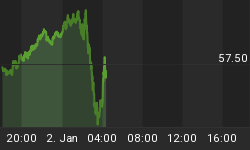Squint hard enough at the Nasdaq Bubble, and apparently you can see the future of gold...
The GREAT SAGE HIMSELF - seer of the financial crisis, gloom-n-doomster extraordinaire - Nouriel Roubini thinks today's gold investors are "sheep or lemmings".
Either way, gold is a dumb thing to buy, says he. Because it's a bubble, plain and simple and always.
"Since gold has no intrinsic value," says Dr.Doom, "there are significant risks of a downward correction."
Oh sorry - that was him back in December 2009, not August 2011. The gold price ha very nearly doubled since then, despite having no value to NYU economists. But no matter. It's what happens next that counts.

Hence this chart, contrived by a Reuters staffer apparently, and linked approvingly by the great sage on Roubini's @nouriel feed on Twitter this week.
Less-qualified minds than the Doctor might wonder quite how the Nasdaq's path is supposed to say anything about gold's "bubble" today, especially when they compare the two in the chart above. They last touched in 2005 - hardly nailed on.
You might also note that the vertical axes show nominal prices (Dollars per ounce for gold, index value for the tech-stock Nasdaq). That overplays gold's relative gains, now running at 6-fold since the chart's starting point. The Nasdaq, at its top of only a few months earlier, you'll recall, towered more than 10 times higher from a decade before.
And that choice of starting point is significant, too. Because 2001 saw gold's lowest monthly average in more than two decades. Whereas a decade earlier, 1990 was a long way from kick-off for tech...
Look - there's a dip in the gold price ahead! And then another! But see how well the gold price now maps the Nasdaq? And see where we're headed? Gold $21,500 in January 2025 here we come!
Yes, if we also roll the tech-stock index - as with gold - back to its last historic low (Sept. 1974), then the true "bubble" ahead would become clear. On the laziest analysis, at least. Step forward Roubini again.
"Question for gold bugs," he asks, also in a Tweet: "How much of gold long positions are financed now, as Nasdaq was in late '90s, with leverage? Do CME data show that?"
Hmm, well, no they don't, because they don't need to. All futures and options are leveraged, by definition. You get exposure to a larger chunk of the asset than your money would otherwise buy. And after this month's margin hike by the CME on gold futures, the leverage is now 25-to-1 across the board.
US regulator the CFTC publishes data more in line with what (we guess) Roubini is after. And the "net long" position in Comex gold futures and options, held by structurally unhedged (ie, speculative, non-mining, non-refinery and non-bullion-bank) traders was equivalent on the latest data to 802 tonnes of gold bullion by value.
Bubblicious? That's nearly 50% above the 5-year average (whoah!) but it's also below the peaks of spring, then summer and then autumn 2010 (ah). It's also less than half the fully-cash paid bullion exposure held in exchange-traded trust funds (ETFs) around the world. And it's barely half the daily turnover in London's professional wholesale gold bullion market - heart of precious metals dealing worldwide, and with a handy association website signposting the latest data just here. (It needs sizing up by 3 or 5 times, depending on activity, to account for netting. Ask a professional.)
Still, let's not be hard on the professor. He hasn't got a clue, after all, what he's talking about. But that never got in the way of a good PR-grabbing, sheep-baiting headline. And it is, after all, precisely what Twitter is for.















